Features
We Can't Get Her Out of Our Heads
Kylie Minogue Albums Ranked Worst to Best
by Peter Piatkowski
With the massive success of her latest hit, “Padam Padam,” Kylie Minogue has proven that she has longevity and is still able to do battle on the pop radio with starlets who grew up listening to her music. Like her peers Madonna and Janet Jackson, Minogue has created some of the most indelible and fabulous moments in pop music. She’s a camp pop queen adding a dash of the ridiculous to her music, making her a favorite among gay audiences. Her 2023 album Tension is the latest in a series of late-career triumphs that highlights a talented and gifted artist who is able to grow and change, evolving with her sound and image to remain exciting and interesting. Below is a list ranking her studio albums, from her Stock Aitken Waterman days in the 1980s, to her more experimental time in the 1990s, to the post-millennial Kylie who found another career embracing her dance diva.
17. Enjoy Yourself (1989)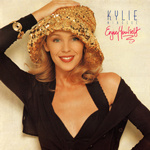
For her sophomore effort Minogue had a hard task: to follow up to a smash hit debut. Instead of being innovative or creative, she and her label merely put out a carbon copy sequel to the first album. It’s not that the first album was great, but it contained some memorable pop singles; Enjoy Yourself doesn’t have even have that. The Stock Aitken Waterman production sounds freeze-dried and Minogue’s performances seem perfunctory and merely competent. It was a huge hit and spawned more hit singles for the singer, but it’s barely memorable more than 30 years after its release.
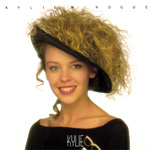 16. Kylie (1988)
16. Kylie (1988)
There’s nothing that indicates that the Kylie Minogue of this debut would become one of the biggest and most popular singers of her generation. A former teen actress, Minogue wasn’t much of a singer and relied more on her charm, looks, and the uber-competent—but dated—musical input of Stock Aitken Waterman, the songwriting trio that would dominate dance-pop in the UK and Australia. In retrospect, Kylie is wildly inconsistent. The singles—“The Loco-Motion,” “I Should Be So Lucky,” “Got to Be Certain,” and “Je Ne Sais Pourquoi” in particular—are good. Catchy earworms, they set the stage for Minogue’s superstardom. Yes, they sound tinny and overly processed, and Minogue’s nasal chirp seems lost in the clattering synthesizers, but they do bring up likable nostalgia.
15. Let's Get to It (1991)
Building on the commercial success of her first three albums, Let’s Get To It essentially returns to the format of Rhythm Of Love. The omnipresent Stock Aitken Waterman productions, then-current pop flourishes, and further exploration of other pop sounds. By 1991, Minogue was looking to queer and dance culture to inform and mature her sound. Like her other albums, Let’s Get to It still feels like a vehicle for her hit singles and there is a lot of filler, but those singles are still delectable bursts of cheery bubble-gum pop. Though slightly dimmer than its predecessor, Minogue is still trying to emulate the careers of Madonna and Janet Jackson, incorporating urban-pop, house-pop, and soul into the assembly-line pop of Stock Aitken Waterman.
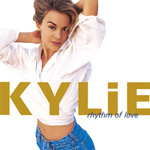 14. Rhythm of Love (1990)
14. Rhythm of Love (1990)
Minogue’s third album came at an important time in her career—though not completely free of the strong influence of Stock Aitken Waterman, the singer was flexing some of her creative muscles and looking to have more input into her sounds. Part of that growth meant sharing some songwriting credits, including a slightly more mature dance sound, and most importantly, working with collaborators outside of Stock Aitken Waterman, most notably Madonna songwriter/producer Stephen Bray. Though the singles may not have had the impact of Kylie’s hit tunes, they demonstrate a noticeable improvement. “Shocked” is a remarkably strong entry this early in her work, bearing echoes of house, funk, and disco. The pair of Stephen Bray tracks weren’t hits and sound like Madonna hand-me-downs, but point to the greatness Minogue would achieve in the 1990s.
13. X (2007)
X is a strange record in Minogue’s discography. Honestly, it’s a mess, but it’s a lot of fun and there’s a lot to love on the album, starting with the stomping electro-trash of “2 Hearts.” It’s not exactly a “new” Kylie but it’s a frolicking, trashy pop tune that adopts a campy punk goddess persona. It’s silly and pretentious, but it works despite itself. There are other brilliant moments that stand out among the gaudy, busy chaos of X. “Sensitized” is a breezy, urgent bit of synth-pop; “Wow” is a throwback to her SAW days, filtered through a post-2000 speaker; “All I See,” swings on a gentle lilting beat. There are lots of sounds and influences thrown into X—so many that the end result is quite dizzying and confusing, but the high moments hit hard enough that one shouldn’t underestimate this inconsistent gem.
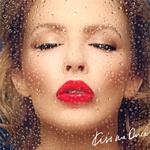 12. Kiss Me Once (2014)
12. Kiss Me Once (2014)
After Minogue’s massive comeback successes with Light Years and Fever, all of her studio albums after those two smashes were welcomed with high expectations. Kiss Me Once is a hodgepodge of 2010s dance-pop, with a patchwork of singles, b-sides, and filler. By 2014, Minogue was able to command some of the most expensive songwriters and producers and therefore, Kiss Me Once seems like a minor disappointment. There are some sparkly moments that recall Minogue at her best—“Into the Blue” is a cool, clanging electropop banger; “I Was Gonna Cancel,” her collaboration with Pharrell Williams, is A+ dance-funk; and her duet with Enrique Iglesias, “Beautiful,” is suitably moving and touching.
11. Kylie Christmas (2015)
If any performer would put out a Christmas record it would be Kylie Minogue. What’s surprising is that it took so long. Though not a definitive or indispensable entry in her long discography, it’s still a pleasing collection of holiday chestnuts, originals, and some imaginative covers. Like most contemporary Christmas records, Kylie Christmas strives to be a holiday perennial but also a mainstream pop album; because of Mariah Carey’s “All I Want for Christmas (Is You),” every pop diva wants to luck on her own holiday standard. In Minogue’s case, it’s “100 Degrees,” a neo-disco duet with sister Dannii. Kylie Christmas is so endearing, charming, and fun, that it doesn’t matter that we’ve heard most of these songs a million times before (seriously, we don’t need to hear another rendition of “It’s the Most Wonderful Time of the Year”). The weirder covers make this album a little more interesting, especially Minogue’s version of the no-wave classic, “Christmas Wrapping” in which she’s joined by punk god Iggy Pop.
 10. The Abbey Road Sessions (2012)
10. The Abbey Road Sessions (2012)
An artist with a career and discography as prodigious as Minogue’s means that The Abbey Road Sessions is inevitable. Like most middle-aged artists, Minogue would return to her catalogue, recasting her shiny, sparkly pop tunes as orchestral pieces. The range of material on The Abbey Road Sessions span her whole career, so we get reworked versions of her SAW 1980s hit singles, her ’90s-era club stuff, and her post-2000 comeback work. What is so impressive about The Abbey Sessions is that the songs—despite being lighter than air—manage to hold up to these ambitious arrangements that expose the sturdy structures of these pop confections. And as a vocalist, Minogue had developed her own distinct style and matured into a solid songstress. In fact, the pop diva had designs on jazz music (even studying the iconic work of Blossom Dearie) and in 2022, she would perform her hits as supper-club jazz-pop at the venerable Café Carlyle.
9. Aphrodite (2010)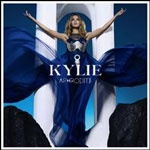
After the confounding X and its clashing sounds, Aphrodite sounds like a comfortable return to form. A sleek and glossy dance record, Aphrodite is another triumph for Minogue, working largely with Stuart Price, who lent the record a decidedly British sound. The singles from the album felt like classics, from the heart-stopping rush of “All The Lovers” to the pounding, synthy “Get Outta My Way” to the ’80s New Wave pastiche “Better Than Today,” the best songs on Aphrodite rank among the diva’s best. Greatest of all is the winding club-centric techno-pop of “Too Much,” that matches Minogue with dance greats Calvin Harris and Jake Shears.
 8. Golden (2018)
8. Golden (2018)
The cover and hype preceding Golden’s release tried to convince us that Kylie had gone country. On the album’s art, she’s captured wearing boots, lounging on a couch with a guitar propped up next to her. A lot of Golden was recorded in Nashville, which led to the “Kylie does Dolly” talk, but aside from some scattered steel guitars, fiddles, and acoustic guitars, Golden is firmly a pop record. It may not feature the glossy dance work of her best hits, but Golden isn’t the huge stylistic departure implied by the country-flecked affections of the tunes. Released three years after her last studio LP, Golden is a wonderful album that is yet more proof of just how gifted and talented Kylie Minogue is. She had a hand in writing all of the tracks on this ambitious and thoroughly enjoyable album that feels somewhat muted and sedate when compared to the club-fantastic releases before. Golden wasn’t an indication of a new career for Minogue (she pivoted back to disco soon after), but it’s still a key album in her CV.
7. Kylie Minogue (1994)
More than any other album in her career, Minogue’s self-titled 1994 release is the one that signalled the arrival of a true artist. Before that, she spent her career chirping churned pop tunes. Kylie Minogue is the first album she released after fleeing the artistically limited confines of the SAW machine. Turning towards club, queer, and DJ culture, Minogue recorded a fantastic album that sought to absorb trance, house, trip-hop, and dance-pop into a surprisingly cohesive project. Working primarily with the British electronica outfit Brothers In Rhythm, our diva expands on her work, finding seemingly disparate sounds like sitars, record-scratches, jazzy keyboards, and rubbery beats. Minogue’s assured step into ’90s-era house is brilliant, particularly on the fabulously gay “Where Is The Feeling.” Along with Brothers In Rhythm, Minogue also got dance maestros the Pet Shop Boys and M People to contribute tracks to the album.
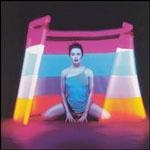 6. Impossible Princess (1997)
6. Impossible Princess (1997)
The 1990s was a strange time for Kylie Minogue. After the bouncy ’80s, in which she racked up an impressive eight top 10 UK hits, she entered the new decade looking to expand her sound by stepping away from the SAW hit factory and working with other producers and songwriters. She also wanted to incorporate more interesting genres of music on her records, finding kinship with the clubs—and so she started recording trance, trip-hop and house. She also recorded a dark, gothic duet with Nick Cave And The Bad Seeds, “Where the Wild Roses Grow,” in which she portrayed the doomed, murdered lover. Then in 1997, she came out with a shockingly experimental record, Impossible Princess, which blew apart her pop-friendly image. Though not an “indie” record as some of the press would suggest, it’s still a complex, dark, and ambitious album. Working largely with Brothers In Rhythm, who brought her to house music for her 1994 self-titled work, on Impossible Princess, the crew brings out shades of Minogue that were absent in her poppier works. There are elements of Britpop, rock, jangly guitar pop, trance, all filtered through her radio-friendly pop vision. So a song like “Some Kind Of Bliss” which fairly struts over crunchy guitars still has those pop hooks and polish. The album’s high point is “Breathe,” a ponderous, moody trip-hop tune that chugs on a creeping, crawling beat. Other albums in Minogue’s oeuvre are more consistent, but for sheer chutzpah and bravery, Impossible Princess is required listening.
5. Light Years (2000)
After the bruising commercial disappointment of her 1997 album Impossible Princess, Kylie Minogue had to take stock of her career and figure out what to do. The 1990s wasn’t the hits-laden decade that the 1980s were, mainly because she decided to branch out from her prefab dance-pop success and experiment with more complex and challenging styles of dance music. When facing a new decade and a new millennium, Minogue understood that to regain her audiences, she would have to go back to basics. Way back. Instead of just the 1980s, she would stretch back to the 1970s. For her 2000 album Light Years, Kylie Minogue would make a much-ballyhooed return to pop. Upon a careful listen to Light Years, however, reveals that the record is a brilliant collage of dance-pop of the 1970s to the late 1990s, all batter-dipped in breezy, millennial disco. Like Madonna, she would start to take sounds of dance clubs, but scrub them up, polishing them to the point in which they became radio-friendly pop ditties. Her efforts were rewarded with one of the biggest successes of her career, including the hit single, “Spinning Around” (co-written by fellow dance-pop queen Paula Abdul). Other singles like “On A Night Like This” and “Please Stay” took sonic cues from Cher’s “Believe” and the ascendant UK girl band revolution in British pop.
 4. Disco (2020)
4. Disco (2020)
Like a lot of musical artists, the pandemic and lockdown had an effect on Minogue’s career. In response to the chaos and fear we all were collectively experiencing, the pop diva did what a lot of us do in times of strife: go to the dance floor. Minogue—like Madonna—understands more than anyone else, that dance music has always been a source of joy and refuge from pain. Gays looked to dance music as an escape and saw the dance floor as a safe space. Gratefully free of any reference to the world’s pain, Minogue crafted a relentlessly positive and delightful party with the retro-sounding Disco. She embraces the camp, cheesiness, and absurdity of disco music, particularly a gooey blend of ’70s disco and ’80s dance-pop. Minogue not only had a hand in writing all of the tracks, but learned to put down her own vocals using Logic Pro, finishing up the album in a home studio. The result is one of Kylie’s greatest achievements. The singles were sleek and catchy—“Say Something” is a thrilling ABBA tribute, so good that I’m sure Benny Anderson and Björn Ulvaeus wished they wrote it.
3. Tension (2023)
Sixteen studio albums in, and Minogue has proven that she’s not just a legend but a vital and exciting recording artist. Her single “Padam Padam” brought her back to the top 10 after over a decade. Tension is a near-perfect album with some of the singer’s greatest work. An audio textbook of dance-pop of the last 50 years, Tension has a special place in its heart for ’80s synth-pop. Though she was a powerhouse in the ’80s, she wasn’t part of that New Romantic movement, instead chirping SAW product gaily. It’s a shame, because evident on the beautiful tunes on Tenson, she is able to impart that specific heart-stopping, lump-in-the-throat moment of the most propulsive synth-pop ballads. Though it’s festooned with neon and fluorescent synthesizers and robotic drum machines, Tension still feels utterly modern and thoroughly fresh.
 2. Fever (2001)
2. Fever (2001)
After the success of Light Years, Minogue could be forgiven for crafting a note-for-note sequel, so it’s all the more admirable, that instead of doing that, she sought to build on that triumph with a record that updated her sound and image. Madonna has been praised for her constant reinventions, but Minogue’s ability to change and grow with the time should be equally heralded. Of course, the centrepiece of Fever is the ubiquitous hit single, “Can’t Get You Out Of My Head.” Co-written by former 90s dance diva Cathy Dennis, the song seems to have been created in a laboratory—it’s the perfect pop single. Catchy and memorable, with an unforgettable hook—the chanting “la-la-la-la” which is deceptively single and dumb, but bait that leads listeners to hum that song as it remains lodged in their brains. A lesser artist would have built an album around a hit single, but to Fever’s credit, the record is crammed with canny singles as well as high-quality filler. Though “Out Of My Head” would understandably dominate, other tunes like the neo-disco of “Love At First Sight” and the electro-pop “Come Into My World” are worthy successors. Even the album tracks are very strong; case in point: the ebullient midtempo title track or the deliciously bonkers “Burning Up,” which veers abruptly from twee ballad to club banger.
1. Body Language (2003)
Once the dust settled, “Can’t Get You Out Of My Head” became Kylie Minogue’s re-introduction to American audiences, who had largely ignored Minogue after her 1988 hit “The Loco-Motion.” As a follow up to Fever, Minogue decided—yet again—to do something different. Instead of putting out a similar record of top-shelf millennial dance-pop, she released what would be arguably her greatest album, Body Language. Pulling in elements of dance-pop, she also looked to ’80s-era urban pop, R&B, electro-pop, Prince-influenced Minneapolis funk, and even dashes of New Wave and New Romantic. Body Language would be Minogue’s most ambitious of her mainstream, radio-friendly pop albums. Though she didn’t abandon the disco or the dance floor, she was also interested in exploring the urban influence of modern dance music and synth-pop, folding in American influences as well as British sounds to create this stylish, chic pop record. The best track is the hit single, “Slow,” a gurgling, minimalist tune that simmers on simple pouncing synths. It’s sensual and sexy, with Minogue positively purring the carnal lyrics. Other high points include the winding funk of “Secret (Take You Home),” the hip-hop dusted disco-pop of “Sweet Music,” and a Cathy Dennis reunion on the ’70s slow burning number “After Dark.” A hidden gem is the dramatic synth ballad “Loving Days” which will remind listeners of Depeche Mode, the Pet Shop Boys, or Erasure at their most swooning. A brilliant album.